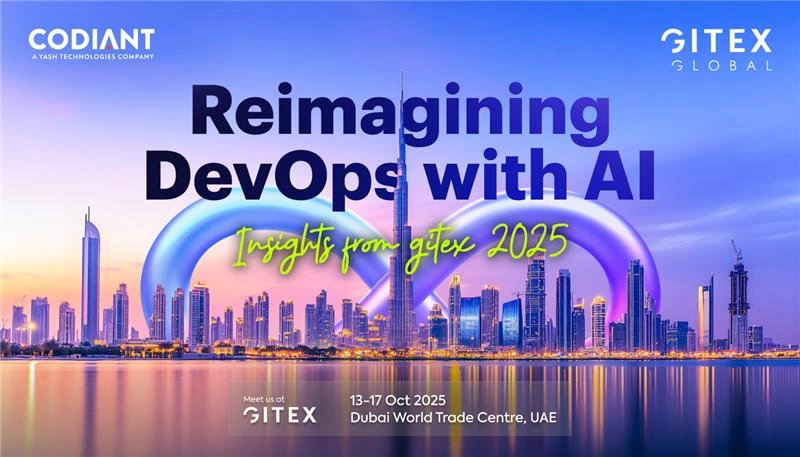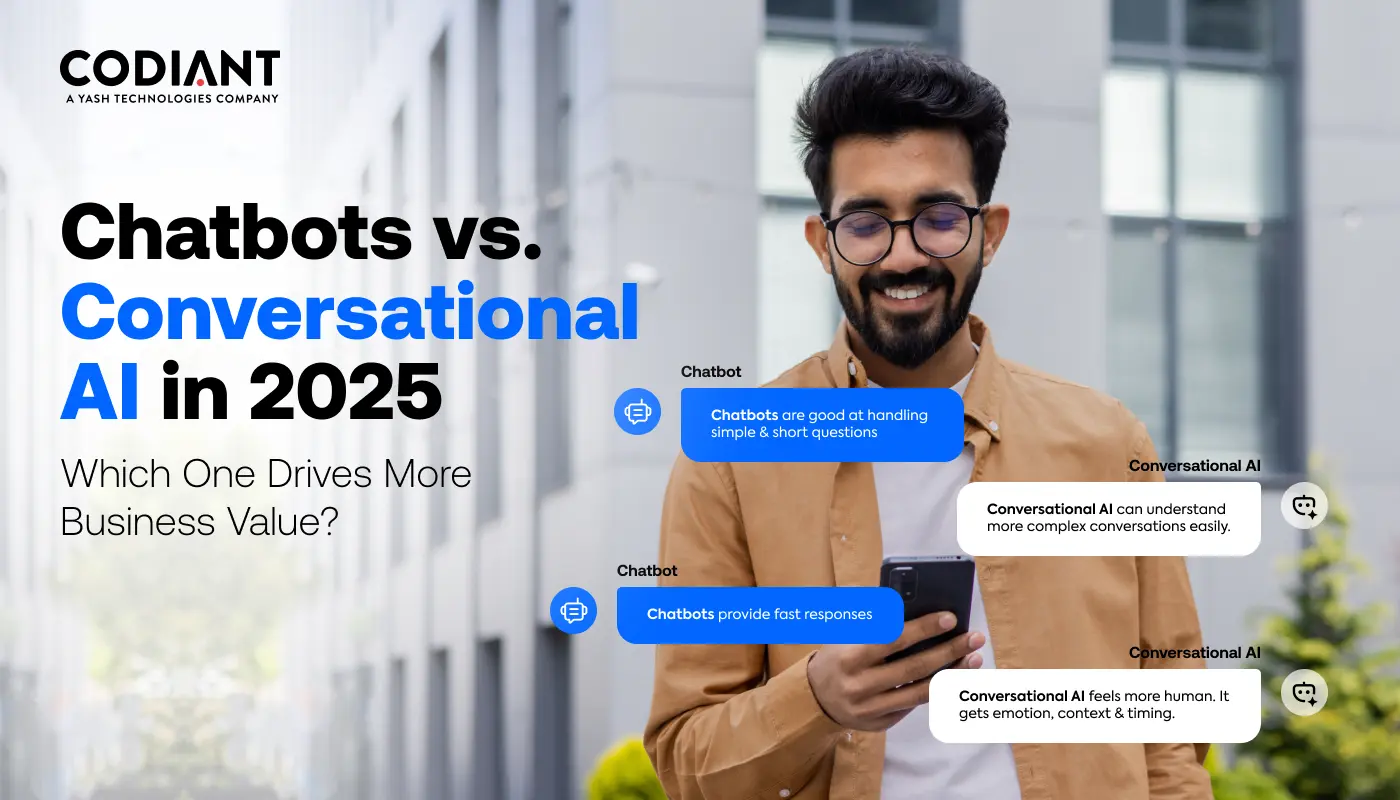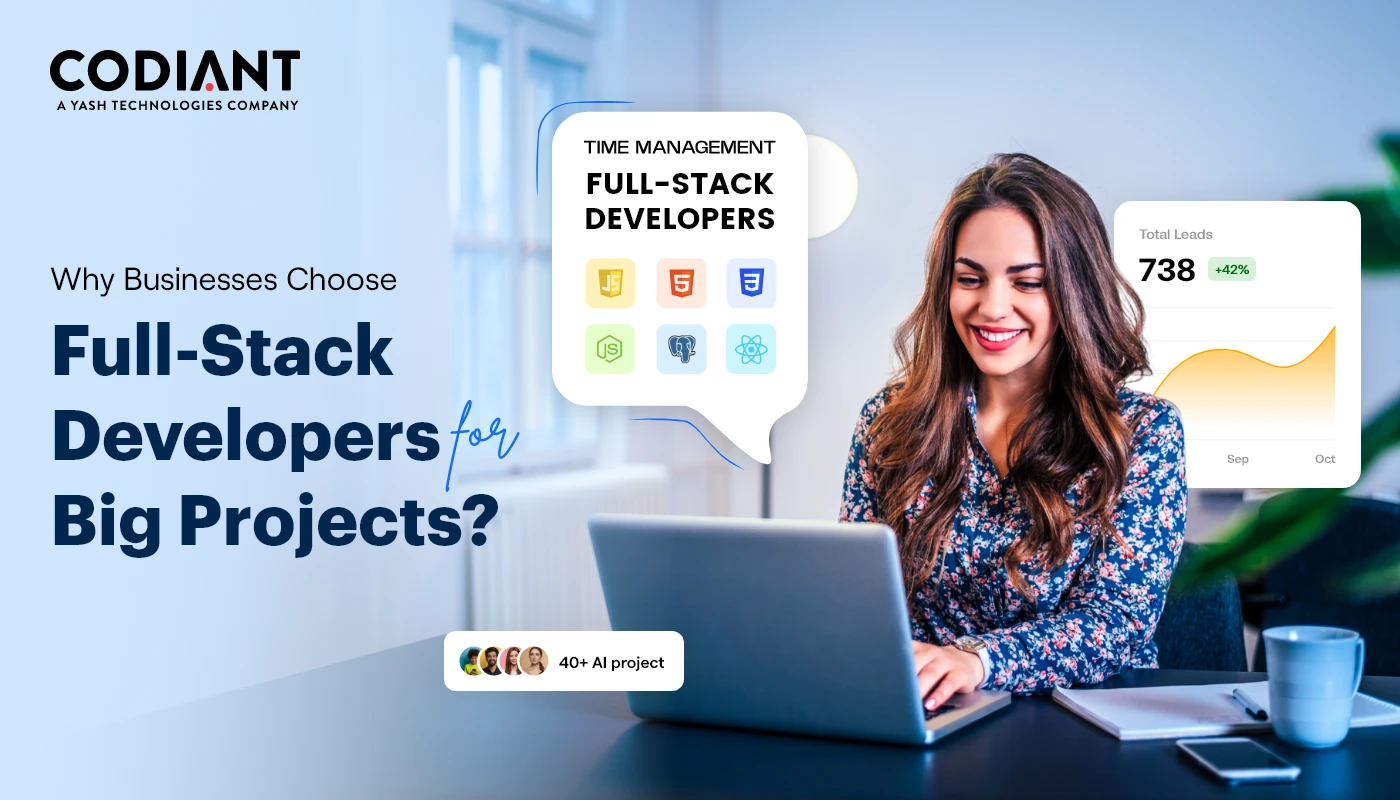AI for DevOps & Developers: GITEX’s Vision for the Next Gen Dev Stack
Table of Contents
Subscribe To Our Newsletter

If you’re a developer or part of a DevOps team, you’ve probably noticed one thing – the tools you used just three years ago already feel… old. Not because they’re broken, but because the pace of change has gone from fast to blazing.
Think about it – your code reviews are done in minutes, not hours. Bugs get fixed before they even hit production. Your infrastructure scales itself – and no, you don’t have to wake up at 3 a.m. to make it happen.
All this is happening because of AI in DevOps & it’s exactly what’s taking center stage at GITEX Global 2025.
This year, GITEX isn’t just talking about the future stack — it’s showing you how AI can be your stack. From predictive deployments to AI-powered incident management, the vision is clear: faster releases, fewer errors & a developer experience that actually lets you focus on building, not babysitting pipelines.
By the end of this read, you’ll know exactly how AI is re-wiring the developer toolkit, why GITEX’s vision matters & where you can plug in to stay ahead of the curve.
The State of DevOps Before AI
Think back to your last release cycle.
The build passed, the tests ran, the deployment went live – and yet, there were still late-night fixes, performance dips & unexpected bottlenecks.
That’s been the story for most teams. DevOps has been great at automating repeatable tasks, but it’s rarely been proactive. For full-stack developers, infrastructure scaling was based on forecasts that sometimes missed the mark. Testing often felt like a race against the clock. Monitoring caught issues, but only after they started affecting users.
This is why more teams are rethinking their setup. They’re moving toward AI-ready infrastructure that can adapt faster & adopting AI tools for developers that fit naturally into existing workflows. Instead of bolting AI onto the side, they’re weaving it into the way they plan, build & ship software.
For AI software developers, the shift is less about replacing their process and more about removing the friction in it. And for companies investing in AI software development services, the focus is on creating a foundation that supports faster decisions, cleaner releases & fewer surprises after launch.
It’s not about adding more tools. It’s about making the stack itself work smarter – and that’s the change GITEX 2025 is putting under the spotlight.
AI’s Role in the Next-Gen Dev Stack
AI in the developer stack isn’t about fancy features – it’s about making every day work easier.
Here is what that looks like: –
- Fewer repetitive tasks: – Developers spend less time fixing the same issues or running the same tests over and over.
- Smarter testing: – When you commit code the system can point out where problems are likely to appear before they cause trouble.
- Automatic scaling: – If more users suddenly join your app your servers adjust without anyone needing to log in and make changes.
- Cleaner alerts: – Instead of dozens of warnings only the important ones reach the operations team.
- Everything in one place: – AI tools for developers fit into the tools you already use so you’re not jumping between tabs.
- More reliable releases: – With AI-ready infrastructure and AI software development services, businesses can launch updates faster and with fewer bugs.
In simple terms: AI isn’t replacing developers – it’s removing the busywork so they can focus on building better products.
Read more: Why ‘Powering the Future’ Is More Than a Theme at GITEX 2025
GITEX’s Vision for AI-Powered DevOps
Walk into GITEX Global 2025 and you’ll notice something: AI isn’t a “topic” anymore – it’s the default setting. Especially in DevOps.
This year’s vision is bold: move from reactive firefighting to predictive, self-healing systems. Imagine a pipeline that tells you a deployment will fail… before you even click “merge.” Or infrastructure that scales itself in real time because it knows traffic is coming.
The conversations at GITEX are shifting from “Should we adopt AI?” to “How deep can we integrate it into the developer stack?” And the answers are inspiring:
- AI-driven CI/CD pipelines that adapt to build history.
- Intelligent monitoring that cuts alert fatigue by correlating noise into clear, actionable issues.
- DevSecOps automation that scans, patches & documents compliance without breaking your flow.
For developers, this means less time firefighting and more time building. For businesses, it means faster delivery, fewer outages & a competitive edge you can measure.
GITEX isn’t just predicting where DevOps will go – it’s showing the toolkit that will take us there. And if you’re paying attention, it’s the perfect time to start building your AI-first playbook.
Key Technologies Defining the Future Stack
The future of DevOps won’t be built on a single breakthrough. It will be shaped by a stack of technologies working together – each bringing intelligence to a different stage of the development lifecycle.
- LLM-Integrated IDEs – Coding tools that suggest improvements, fix errors & optimize code as you type.
- AIOps Platforms – Systems that watch over your infrastructure, spot unusual activity, predict issues & fix them automatically.
- AI-Optimized CI/CD Pipelines – Pipelines that decide which builds to run first, use resources wisely & adapt to how your team works.
- DevSecOps with AI – Security built into every step of development from scanning code for issues to checking compliance in real time.
These technologies do not just speed up delivery – they reduce risk enhance reliability & free developers to focus on solving complex problems instead of managing routine tasks.
Real-World Use Cases & Success Stories
AI in DevOps is already helping teams work faster, fix problems sooner & keep systems running smoothly. Here are a few examples:
- Stopping outages before they happen – A large e-commerce company used AI to monitor its systems. It spotted a slowdown pattern that usually led to downtime, allowing the team to fix it in advance. This kept their site running during a busy sales week.
- Fewer deployment mistakes – A SaaS company used AI to create extra test cases. This helped catch hidden bugs before launch, cutting deployment errors by 40% & reducing customer complaints.
- Faster release cycles – A fintech startup brought in AI-powered CI/CD pipelines. The system decided which builds to run first, assigned resources automatically & checked deployments quickly – turning monthly releases into updates twice a week.
- Handling sudden traffic spikes – A gaming platform used AI-ready infrastructure to prepare for unpredictable player surges. The system scaled itself during peak hours keeping games smooth & downtime almost zero.
Read more: Why GITEX Global 2025 Could Be the Turning Point for AI & Infrastructure
Closing Thoughts: GITEX as the Launchpad for Next-Gen DevOps
AI in DevOps is moving from an emerging concept to a standard part of modern software delivery. Teams that start building these capabilities now will release updates more quickly, resolve problems sooner & operate with greater stability.
GITEX 2025 will provide a clear view of how this shift is happening. It will bring together proven technologies, practical use cases & insights from teams already applying AI in their development processes. Attending gives you the chance to understand what works, what doesn’t & how to prepare your own development stack for the changes ahead. For businesses looking to leverage AI services in UAE, this is an unmissable opportunity to see real-world applications in action.
The takeaway is simple: the way software is built and maintained is evolving. Being part of that evolution early will help your team stay efficient, secure & competitive.
Connect with Codiant at GITEX 2025
Explore proven AI capabilities that can strengthen your DevOps strategy and accelerate software delivery outcomes.
Frequently Asked Questions
Start small. Add AI tools to non-critical areas first like code reviews or monitoring. This way, teams can see the benefits without risking production stability.
They’ll get to see tools in action, talk to the people who built them & learn how other companies are using them to solve real delivery challenges.
They study how your team works past build times, release patterns, resource use – and then adjust schedules, priorities & deployments to match.
It’s one of the few places where you can compare vendors side by side, see live demos & ask tough questions before making a decision.
Data quality matters. Poor training data can create security gaps. Regularly updating models and combining AI scans with standard checks is the safest approach.
Featured Blogs
Read our thoughts and insights on the latest tech and business trends
Top Reasons Why Healthcare Providers Need Mobile Apps Today
- October 27, 2025
- Healthcare
If you’ve been to a clinic lately, you might have noticed something new-paper forms are almost gone and screens are everywhere. From booking doctor visits online to checking your recovery updates on your phone mobile... Read more
Which is Better for Your Business in 2025- Chatbots or Conversational AI?
- October 22, 2025
- Artificial Intelligence
In a Nutshell: Chatbots = Simple & Fast- Great for FAQs, appointment bookings & routine customer support. Conversational AI = Smart & Scalable- Uses NLP and machine learning to understand context, personalize replies & handle... Read more
Why Hiring Full-Stack Developers Makes More Sense for Complex Projects
- October 17, 2025
- Staff Augmentation
Let’s start with the obvious- software projects are messy. They never roll out like those neat diagrams in pitch decks where every arrow points forward and nothing breaks. Complex projects - think SaaS platforms, enterprise... Read more





